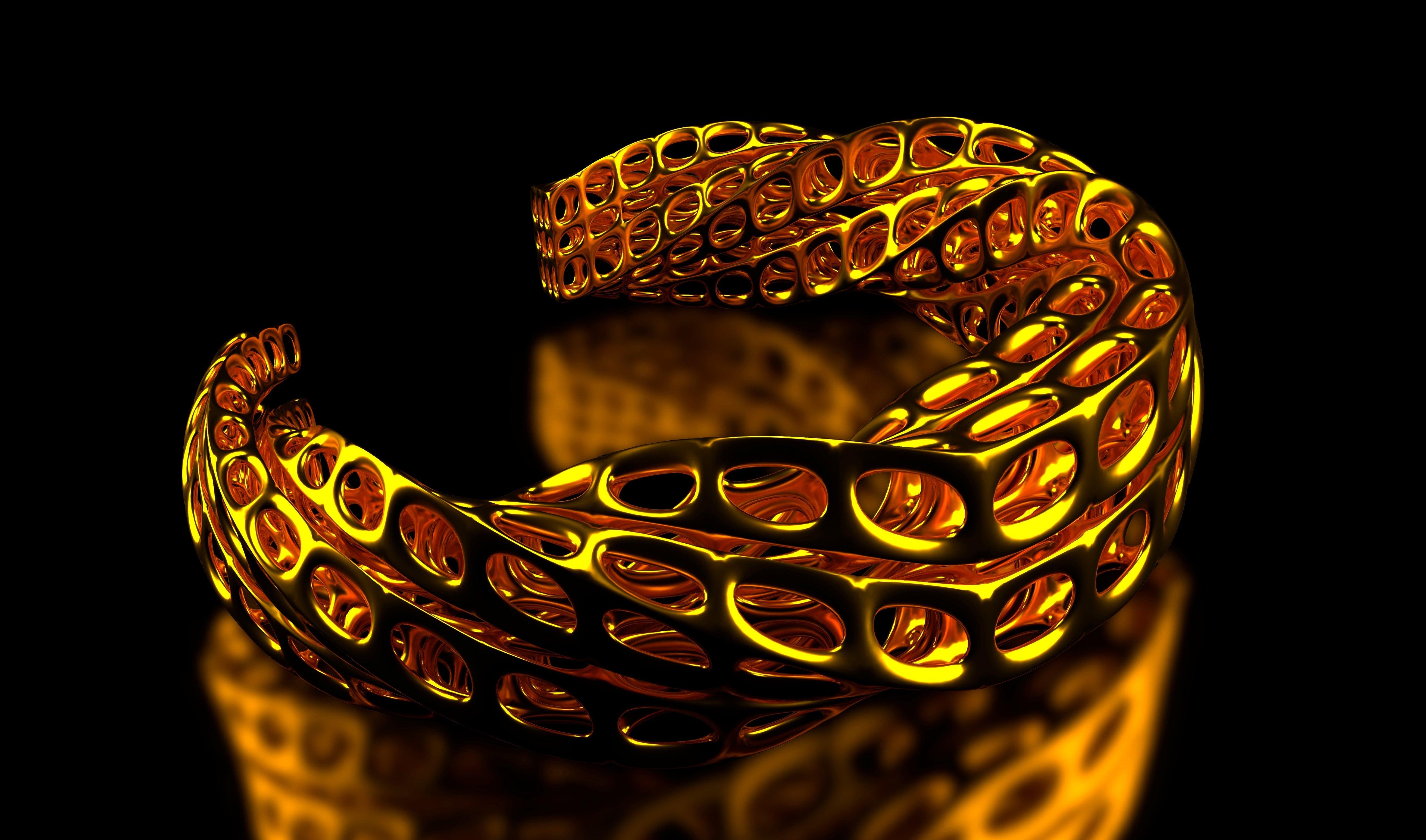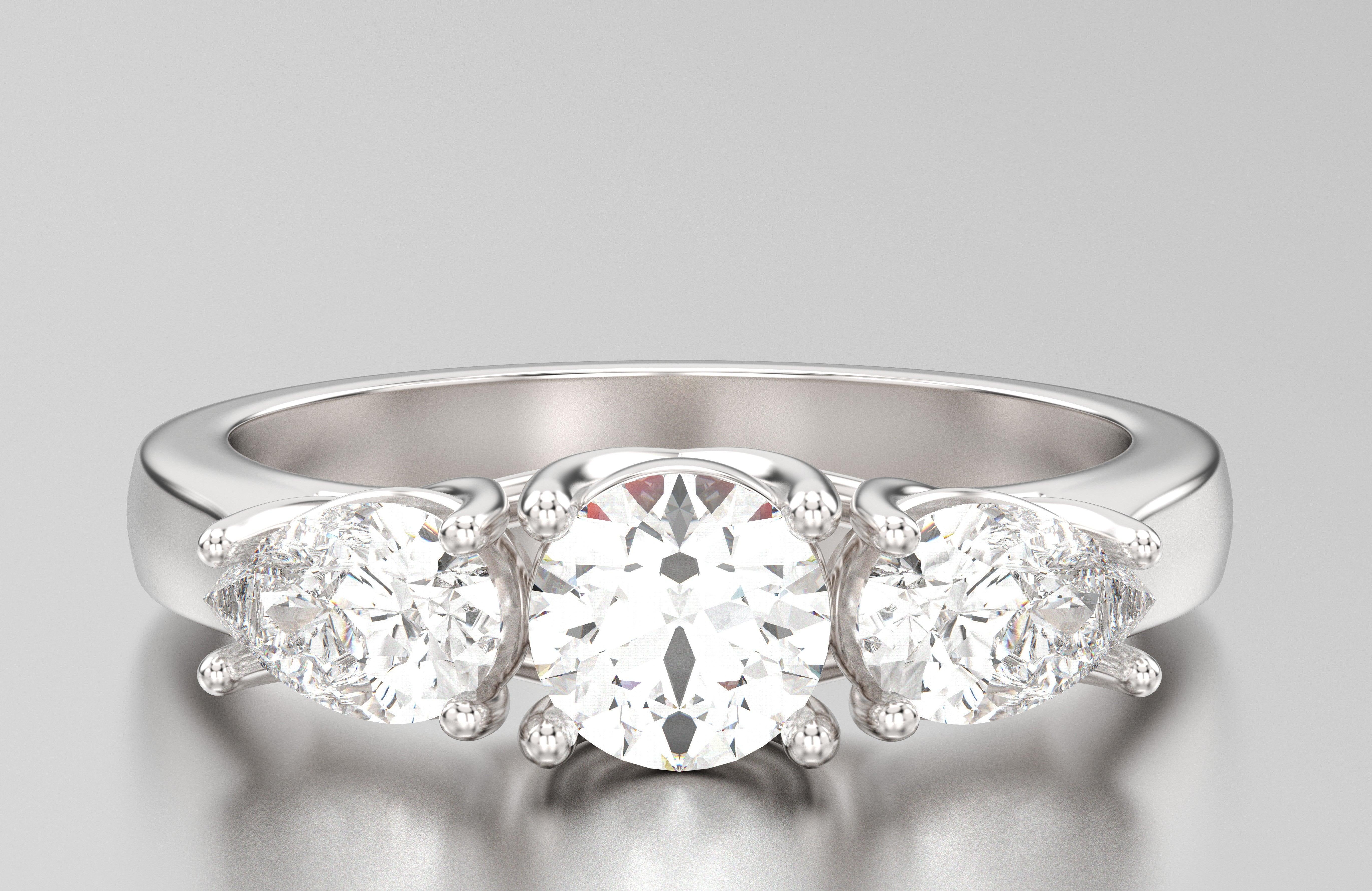
How 3D Printing Has Changed the Jewelry Industry

Did you know that your ring is probably printed? Well, not entirely. If you come to Michael Gabriels, an expert craftsperson right here in NYC ultimately handcrafts your ring. But you may, (or not,) be surprised to learn that many jewelers today employ 3D printing to make the production of your ring more sustainable, efficient, and expedient. In this blog, we’ll discuss how.
Innovations in technology are ubiquitous today. From diamonds grown in labs to the toothbrushes connected to an app on your phone that tells you how much to brush and where; to drones delivering dinner; to the sorting machines in warehouses and the sonar on ships; we have come to rely more and more on our advances in technology and expect them where we would not have before.
3D printing is one such technology and has completely revolutionized the jewelry industry.
How Does 3D Printing Work

First, A highly skilled computer artist produces the design in CAD (Computer Aided Design) the software employed to produce the designs for most 3D printing systems. This computer model can be adapted and customized easily, as many times as necessary, to get the exact composition of the final product before any physical work is done. While alterations of various kinds can still be made post modeling and casting, the ability to do so much detailed work in earlier stages of production reduces the overall amount of labor and energy required.
In our process, we first send a computer model for viewing. If a client needs, we can produce a model for them at our showroom in Soho. Once a computer model is ready, it is uploaded to the 3D printer, which takes a few hours to produce the model. At Michael Gabriels, we allow our printer to work in a slower setting, up to a day, to produce a more detailed and precise model. This small amount of extra time up front- our 3D printers can work quite a bit faster- means a savings of days in post-casting work; savings in the expense of labor, time, and money we can extend to our clients.
At Michael Gabriels, we use two types of 3D printers to make our models; SLA (Stereolithography) and DLP ( Digital Light Processing). These are two of the most common forms of 3D printing, and you may already be aware of or familiar with them. They both produce smooth surfaced models with intricate detailing, using a liquid resin that is slowly cured into the form generated by the CAD computer model.
The main difference between the two is the light source used to cure and dry the resin. In the case of SLA, a laser is used, which moves through the liquid resin to produce the desired line of cured resin matter. In DLP, a projector reflects a digital image into the liquid resin, from off of a semiconductor chip embedded with a matrix of microscopic mirrors, changing the image as needed to complete the model.
When a model is complete, and our client approves it, we send it to casting. We can keep remaking the model as necessary, something impossible to do at our current speed with traditional lost wax and other casting methods. As a result, if something goes wrong even just before casting, or after it, we can rectify the problem quickly without a great deal of expense in time, labor or money, and still maintain our planned scheduled completion. This is a great advantage when producing jewelry for use on a specific date, such as a loved one's birthday or wedding.
Why 3D Printing Has Changed the Game
Ease of Production and Customization
3D printing has changed the way jewelry is made in a number of ways. Primarily used in the pre-casting phase of production, it has made a particular impact on how and what we design. This has had a tremendous effect on our production efficiency at Michael Gabriels, as indeed it has at many other jewelers. We have improved our sustainability, and are able to cater to more clients and more unique designs.
We can now more easily produce many kinds of designs that would have been either impossible or extremely difficult to produce by hand, especially items that have hollows or internal trusses to reduce weight; and some designs that would otherwise have to be made in multiple pieces can be made as one piece or at least all at once.
3D printing allows us to make every single piece customized or completely bespoke, from ring sizing to pave finishing, instead of producing multiple models with limited adjustments available to them, or working with an artist for an extended period of time to produce a bespoke piece.
Most rings are made using a method called “lost wax” casting. This method of casting, going back more than 6,500 years, works by handcrafting a wax model of the product to be cast, and then using it to produce a mold. The wax is removed from the mold, and then the mold is used to produce the final product.
While we still use that method in its intrinsic form- producing a model to make a mold that will be used to make a product- 3D printing of models allows us greater flexibility. We can produce a model more easily than before, in whatever design our clients fancy, at speeds we could not before. And therefore, we can also produce an infinity of molds for production, instead of working with a limited number. Since we can reproduce this over and over again without losing time or wasting money, we don’t have to worry as much about mistakes, since they can be more easily fixed. Moreover, we can produce more detailed models upfront so that less time and labor is spent by our artisans and craftspeople later to finalize the product.
3D Printing Is More Sustainable
At Michael Gabriels our business model is planned around efficiency and sustainability. We love how much 3D printing helps us achieve those goals.
3D printing uses fewer resources than traditional wax model preparation, as well as some of the energy that would have gone into the initial “lost wax” mold production. We save on shipping, saving an expense of time and energy consumption because we no longer need to outsource the model production, nor employ an in-house artist devoted to sculpting the models. This process, which once could take months to finish, now takes a matter of days.
What Is 3D Printing?
3D printers use special forms of plastics and metals to “print” layer by layer or bit by microscopic bit, a three-dimensional form based on a CAD or similar computer program model.
The history of 3D printing starts in the same way as the history of lab-grown diamonds, with the hope of dreamers. At first a fiction, 3D printing is a noticeable subject in several short stories in early 20th-century science fiction, such as in Raymond F Jones’s “Tools of the Trade.” Another notable example comes from Murray Leinster’s 1945 story, “Things Pass By,” where he pretty accurately lays out a major problem with industrial manufacturing, a future form of 3D printing, and how useful it can be.
“Ordinarily, you make a specialized machine-tool to turn out one particular part, and it will produce that part cheaper than any other method can do. But if you try to change the product, the machine is useless. You get efficiency at the cost of flexibility.
“For that reason, there aren’t any mass-production machines for big objects like ships and so on. It’s cheaper to be inefficient and flexible. But this constructor is both efficient and flexible. I feed magnetronic plastics — the stuff they make houses and ships of nowadays — into this moving arm. It makes drawings in the air following drawings it scans with photo-cells. But plastic comes out of the end of the drawing arm and hardens as it comes. This thing will start at one end of a ship or a house and build it complete to the other end, following drawings only.
“It’s ready to make a spaceship hull now.”
Now, there’s no such thing as magnetronic plastics, and this “constructor,” isn't how our 3D printers at Michael Gabriels work, nor is humanity quite at the stage where we can 3D print a fully functional spaceship hull. But it's astounding how close Leinster got to our present reality, and what may likely be the future of 3D printing.
While there were several attempts to produce a 3D printing machine before the 1980s, Bill Masters was, in 1984, credited with the first patent for a 3D printer.
However, no practical versions of 3D printing became widely available until the early 21st century.
Those first, widely available 3D printers were expensive and rare and required technical skills beyond the average person. Some still do, like for the production of the Stoofbrug in Amsterdam, the world’s first 3D printed bridge. However, one main evolution of 3D printing technology in the last decade has been its greater accessibility. Now they are not only the practical toys of NASA engineers but for kindergarteners, construction workers, fashion designers, and of course, jewelers.
Previously, not every jeweler could produce just anything. Some houses like Cartier and Van Cleef & Arpels got their fame simply because of their ability in artistry and production to make designs that others simply did not have the skills, resources, time and labor to produce. Now almost every jeweler can design and produce to the exacting standards of many of the famed jewelry houses. At Michael Gabriels we relish the opportunity to now produce customized and bespoke works of art at the highest levels of intricacy and detail, thanks, in part to our 3D printers.
The Benefit for Consumers
3D printing has made the design and production of your jewelry more efficient and sustainable. It has also reduced the expense. Ultimately, at least at Michael Gabriels, we try to move the savings that we get from using 3D printing, down the line to you as much as possible. You do not need to pay for extra labor, or materials used. You do not need to wait for days or weeks or months to get your final product, and if you change your mind about something, it is easier to implement that into your dream piece.
If you are interested in learning more about 3D printing at Michael Gabriels, or about the products that we use 3D printing to produce, please contact us. We would be happy to produce the bespoke or customized item of your dreams and display the greater efficiency 3D printing had given us.



